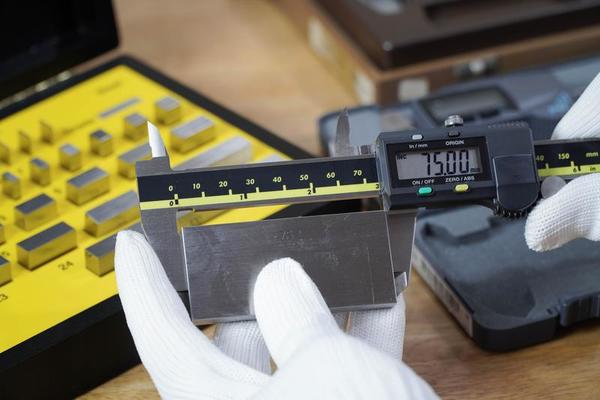Tungsten is prized in aerospace, defense, nuclear, and medical industries for its extremely high density (19.3 g/cm³), exceptional mechanical strength, and outstanding thermal resistance. Among tungsten products, high-density tungsten sheets are particularly valued for applications requiring mass within limited space. However, one often overlooked aspect is how sheet thickness influences its actual (effective) density. Selecting the appropriate thickness is essential to ensure structural performance, energy absorption, and long-term reliability in critical systems.
At Heeger Metal, we specialize in high-density tungsten sheets, ensuring optimal performance for industrial and scientific applications.

Key Characteristics and Uses of High-Density Tungsten Sheets
High-density tungsten sheets combine outstanding mechanical strength, thermal stability, and density, making them suitable for extreme environments where other metals fail.
| Property | Value |
| Theoretical Density | 19.3 g/cm³ |
| Melting Point | 3422 °C |
| Tensile Strength (bulk) | ~900 MPa |
| Thermal Conductivity | ~170 W/m·K |
| Elastic Modulus | ~400 GPa |
Common Applications:
Tungsten sheets are widely used in critical industries where high density and radiation resistance are essential.
| Industry | Use Case |
| Aerospace | Ballasts, counterweights, thermal shields |
| Nuclear Energy | Gamma and neutron shielding |
| Medical | Radiation shielding for diagnostics and oncology |
| Defense | Armor-piercing structures, blast protection |
How Does Thickness Influence Tungsten Sheet Density?
The density of tungsten sheets approaches theoretical levels as thickness increases, due to improved compaction and reduced porosity during manufacturing.
| Sheet Thickness (mm) | Theoretical Density (g/cm³) | Measured Density (g/cm³) | Relative Density (%) |
| 0.1 | 19.3 | 17.4 | 90.2 |
| 0.3 | 19.3 | 17.9 | 92.7 |
| 0.5 | 19.3 | 18.2 | 94.3 |
| 1.0 | 19.3 | 18.7 | 96.9 |
| 2.0 | 19.3 | 19.1 | 99.0 |
| 5.0 | 19.3 | 19.25 | 99.7 |
Tungsten Sheet Properties Compared with Other Materials
Compared to other common metals, tungsten offers unmatched density and strength, making it ideal for shielding and structural uses in harsh environments.
| Material | Density (g/cm³) | Max Thermal Conductivity (W/m·K) | Typical Application |
| Tungsten (5 mm sheet) | 19.25 | ~170 | Aerospace shielding, nuclear barrier |
| Lead | 11.34 | ~35 | Radiation shielding, weights |
| Steel (304) | ~8.0 | ~16 | Structural aerospace and industrial parts |
| Copper | 8.96 | ~390 | Heat sinks, conductors |
| Tantalum | 16.7 | ~57 | Capacitors, X-ray shielding |
Strategies for Selecting the Right Thickness
- Application Analysis: Evaluate the operational environment and performance goals. For example, hypersonic aerospace components may prioritize thermal resistance, necessitating thicker sheets.
- Performance vs. Cost: Thicker sheets are more robust but costlier. An optimal thickness balances structural performance with budget.
- Manufacturing Considerations: Thin sheets are harder to densify fully, affecting performance. Processes like hot isostatic pressing and vacuum sintering improve compaction but add cost.
Explore our high-density tungsten sheets.
Quality Standards for High-Density Tungsten Sheets
High-density tungsten sheets used in aerospace, semiconductor, medical, and nuclear industries must meet strict international standards to ensure purity, consistency, and performance in demanding environments.
| Standard | Description |
| ASTM B760 | Specifies requirements for flat-rolled tungsten including thickness, flatness, and chemical composition. |
| ISO 9001 | Confirms that the manufacturer follows a quality management system for consistency and traceability. |
| RoHS Compliant | Verifies that the product is free from hazardous substances according to EU directives. |
These standards help ensure tungsten sheets are suitable for critical applications that demand high reliability and low contamination.
Request a custom quote for High-Density Tungsten Sheets.
Common Misconceptions in Tungsten Sheet Thickness Selection
- Misconception: Thinner tungsten sheets are always more efficient.
- Reality: Lower effective density in thin sheets can reduce shielding efficiency and mechanical strength.
- Misconception: All tungsten sheets have the same density.
- Reality: Processing limitations cause thinner sheets to have lower relative density.
How to Avoid Common Mistakes When Choosing Tungsten Sheet Thickness
- Use density-measured sheets, especially under 1 mm.
- Consult with materials engineers to assess property needs and tolerances.
- Opt for suppliers with strict quality control on thickness and density.
Conclusion
While tungsten’s theoretical density remains constant, the effective density of tungsten sheets can vary significantly with thickness due to porosity, grain structure, and fabrication methods. This variation directly impacts thermal, mechanical, and shielding properties. Choosing the right thickness is not just a matter of dimensions—it’s a decision that affects performance, safety, and cost. Engineers must carefully assess application-specific requirements and verify effective density to ensure optimal results in demanding environments.
Heeger Metal provides precision-engineered tungsten sheets with tight thickness control and high effective density, delivering dependable performance across aerospace, nuclear, medical, and industrial systems.
Looking for high-density tungsten sheets? Contact us today!

